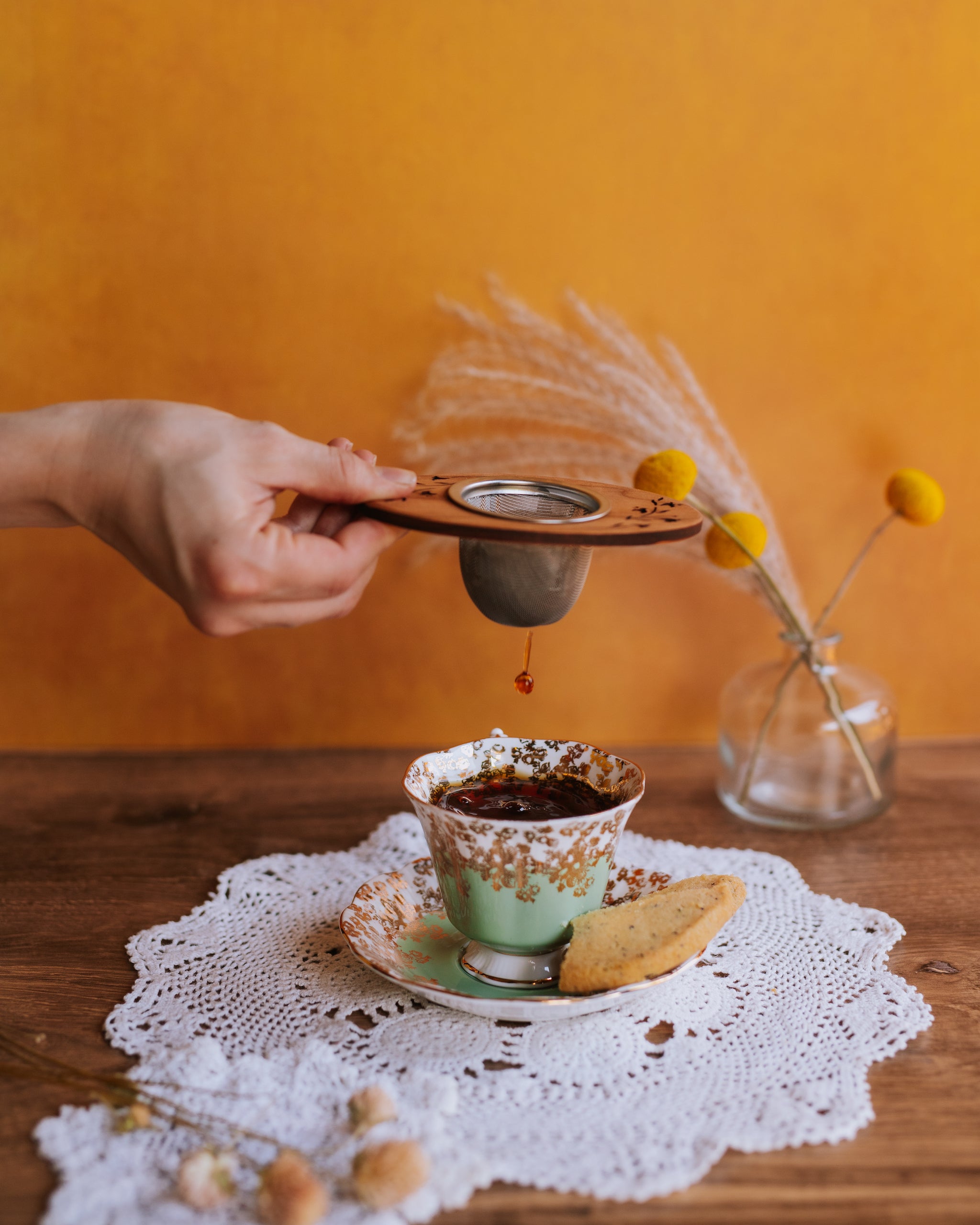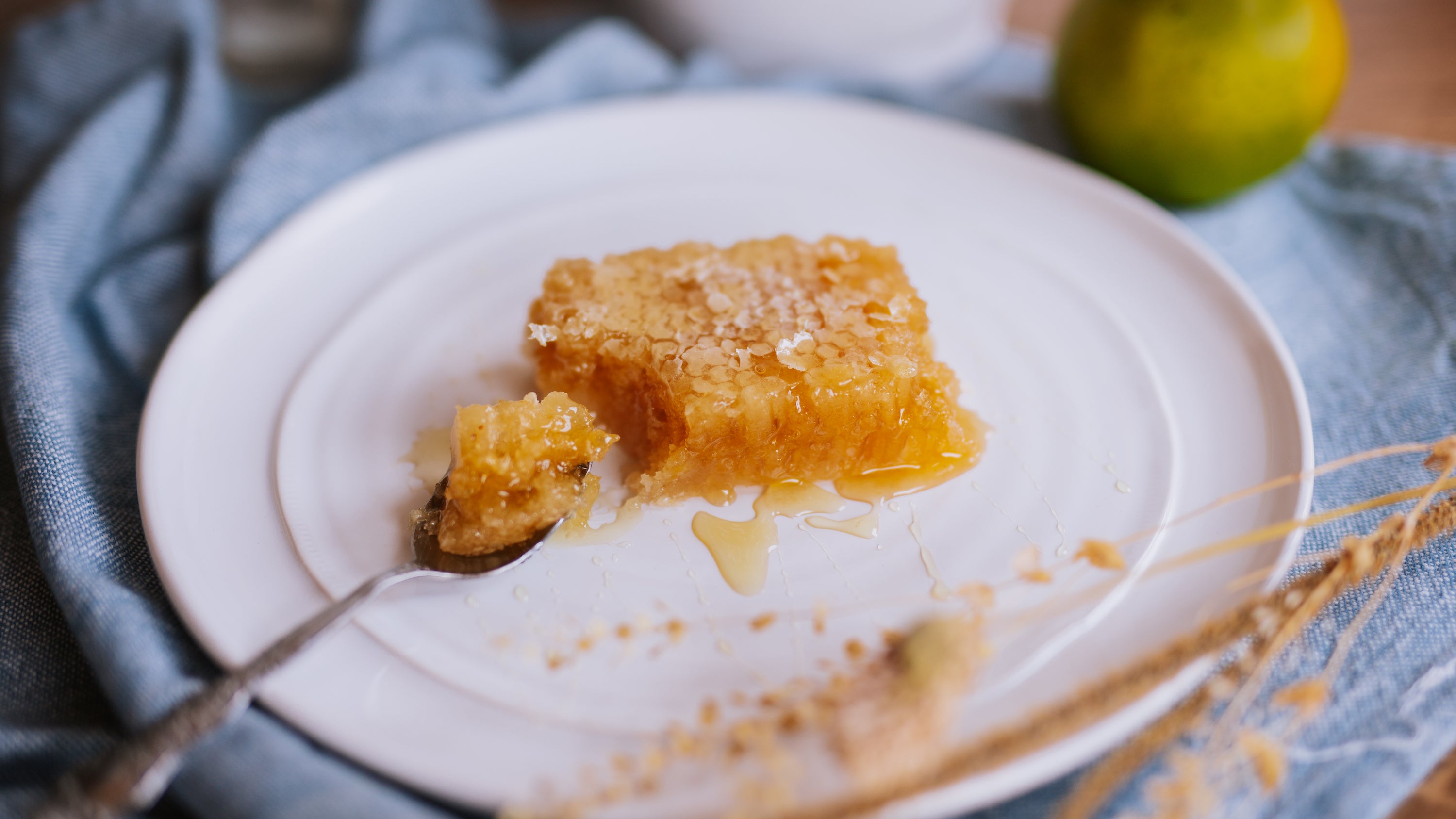
Gabacha is unique for its high levels of the amino acid and neurotransmitter gamma-Aminobutyric acid (GABA). Inside of us are neurons, cells that transmit information within the nervous system. Postsynaptic neurons are neurons that receive a signal. Neurotransmitters relay information to postsynaptic neurons, and this information can be either excitatory or inhibitory, meaning it increases or decreases the likelihood of a neuron to successfully communicate to a postsynaptic neuron. GABA is an inhibitory neurotransmitter, and therefore inhibits the ability of neurons to send, receive, and create messages (1).
All neurotransmitters play important roles in our emotions, behaviors, ideas, and thoughts. GABA is specifically linked to sleep and anxiety. Due to the presence of GABA in the nervous system, an excess of synaptic excitation is prevented. If GABA levels are too low, resulting conditions could include epilepsy or seizures. With an increase in GABA levels, neuron activity decreases, and anxiety and stress related messages are prevented from reaching postsynaptic neurons. With the increase of GABA, the less neuron communication, and the more overall sense of calm and relaxation in the brain.
Many studies have been done on both humans and animals in an attempt to determine the effects of GABA supplements, foods containing GABA such as kimchi and kefir, and GABA teas. However, there is always more research to be done! It is not agreed upon if GABA can successfully enter the blood-brain barrier into the central nervous system, or if it enters through the enteric nervous system, (the gastrointestinal system), more easily (2). It does seem to be more conclusive among scientists that GABA, consumed in conjunction with L-theanine, an amino acid found in tea, seems to have measurable benefits.
In Department of Epidemiology and Public Health, University College London study, it was found that six weeks of tea consumption, in comparison with a placebo drink, led to “lower post stress cortisol and greater subjective relaxation, and may aid in stress recovery” (3). In a study conducted at the South China Agricultural University in the Department of Tea Sciences, it was found through tests that GABA tea may prevent depression in mice (4). In a 2019 research study, nine children with Autism Spectrum Conditions participated in a study where they consumed an oolong tea high in GABA, a gyokuro green tea high in L-theanine, and a placebo tea. The study found an improvement in fine motor skills, manual dexterity, anxiety levels, and balance highest among those who consumed GABA tea (5). Another 2019 study showed that, among thirty participants, the consumption of GABA tea led to a lower stress score, and an improvement in heart rate variability (6). The consumption of GABA in conjunction with L-theanine and caffeine, all found in GABA tea, can lead to an improved attention span, decrease in stress, and an increased accuracy when performing tasks, according to clinical psychologist Michael J. Breus, Ph.D (7). It is also said that the combination of GABA and L-theanine have a positive effect on sleep quality and duration (8).
GABA tea was first produced at the National Institute for Tea Experimentation in 1987 by Dr. Tsushida Tojiro and other researchers (9). The process involves the decarboxylation of glutamic acid, a naturally occurring component of tea that gives it an umami flavor. Maocha, or unprocessed tea leaves, are placed in an anaerobic condition, meaning a sealed vacuum free of air for a period of about eight hours. While in the oxygen free environment, the leaves are exposed to nitrogen, and glutamic acid reproduces. The leaves are then exposed to aerobic conditions for a period of time, spun to break down cell walls, and then again put into the anaerobic conditions. During the repetition of this process, the tea leaves undergo chemical changes and the accumulated glutamic acid results in GABA (10).
The tea leaves are then put into machines that spin and fire them at high temperatures. After this, they are brought to a rolling machine that gently crushes them in order to soften and bring natural oils to the surface of the tea leaves. The tea leaves are then dried, reheated, and compressed into blocks. After the blocks are formed, the tea is rolled, and the process of rolling and forming the tea leaves back into blocks is repeated many times. Finally, the GABA oolong tea is formed into the smaller ball shape commonly seen in oolong teas, then roasted to achieve the desired flavor of the client. This whole process is shown in a very informative video, linked below (11). This is the general process of making GABA oolong teas, however, it may differ slightly based on the machinery available at the tea processing location. It may also differ based on what flavor notes the client desires, for example, how much to roast the tea leaves.
During stressful periods, the act of carving out a small piece of your day to make time for yourself can be an important practice. Throughout history, people have engaged in tea rituals, ranging from elaborate to simple. The complex flavor notes of Gabacha include dried fruit, sweet spice, and sweet potato. Between the combination of these comforting flavors, and the effects of GABA and L-theanine on the brain, Gabacha is a wonderful choice of tea to relax with. We encourage you to create your own personal tea ritual, brew a cup of Gabacha, and take time to breathe, de-stress, relax, meditate, or reflect.
Endnotes:
-
Gazzaniga, Michael S. Psychological Science. New York: W.W. Norton & Co, 2012.
-
https://www.mcgill.ca/oss/article/health/gaba-supplements-glorious-gimmicky-or-just-garbage
-
https://www.ncbi.nlm.nih.gov/pubmed?Db=pubmed&Cmd=ShowDetailView&TermToSearch=17013636
-
https://www.ncbi.nlm.nih.gov/pubmed?Db=pubmed&Cmd=ShowDetailView&TermToSearch=28836632
-
https://www.tandfonline.com/doi/abs/10.1080/1028415X.2019.1588486TEA & AUTISM - What's the connection?
-
Hinton, Tina et al. “Effect of GABA-Fortified Oolong Tea on Reducing Stress in a University Student Cohort.” Frontiers in nutrition vol. 6 27. 26 Mar. 2019, doi:10.3389/fnut.2019.00027
-
https://thesleepdoctor.com/2017/07/11/understanding-l-theanine-sleep-better-night-feel-relaxed-alert-day/
-
https://www.tandfonline.com/doi/full/10.1080/13880209.2018.1557698
-
Production of a New Type Tea Containing a High Level of ϒ-Aminobutyric Acid Tojiro TSUSHIDA, Toshinobu MURAI, Masashi OMORI, Jyunko OKAMOTO
-
Sawai, Y., Yamaguchi, Y., Miyama, D. et al. Cycling treatment of anaerobic and aerobic incubation increases the content of γ-aminobutyric acid in tea shoots. Amino Acids 20, 331–334 (2001). https://doi.org/10.1007/s007260170049



